Did you ever dream of walking by the Water Lily Pond in company of Monet?… This dream could come true sooner than you think!

Museums are undergoing massive changes to update their visitors experience by integrating emerging technologies.
Museums have been around for centuries and yet, when was the last time you actually set a foot in one of them? Too boring? Too strict or old fashioned?… You might want to reconsider those clichés and pass by the Metropolitan Museum of Art on your next trip to New York.
Indeed, in the last decade museums have been facing three main challenges[i]: Funding and finding new streams of income, Organisational culture with new technologies disrupting their usual operating model and Loss of control as museums contents are becoming easily accessible online.
While some museums have been fighting technology in early 2000s by forbidding the usage of mobile phones, they are now embracing it to re-design their organizational and business models. Three main trends[ii] have been observed in the development of new strategies by museums worldwide:
- Content diversification: “how can museums present their content in a manner that is appealing to different groups within society?” [ii]
- Immersive experiences: “shifting to hybrid environments where digital technologies are used to enhance and enliven the physical experiences”[ii]
- Sustainable and open spaces: “museums will continue to embrace more authentically green design “[ii]
The Met has been one of the first museum to go down that path and work on those three areas with the creation of its MediaLab[iii]. The MediaLab collaborates with Universities, Think Tanks, Start-ups and Researchers to explore, prototype and pilot the use of emerging technologies within the museum ecosystem.
Some of the main achievements are as follow:

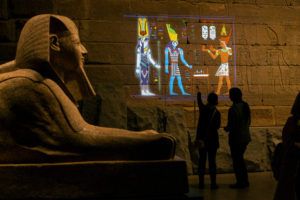
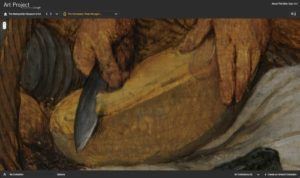
- The new beautifully designed Met App[iv] that includes an interactive map, a full list of exhibitions (with preview), recommendations and the ability to save your favourite art, events and exhibitions in your calendar. This app helps customers to navigate within the Museum but also to stay connected with the Museum novelties and increase visit frequency
- Projected Light[v], the Met digitally recreated the colours of the Temple of Dendur using different software to then project them to fill the actual temple’s carvings
- The Google Art Project[vi] that allows visitors to do online in-depth examination of selected pieces of art with extreme zooming at high resolution along with extensive descriptive information
- The Hip Hop Project[vii] that matches rap lyrics from the Apple Genius database and the art data from the Met in specific exhibitions. Visitors can learn more about the art displayed and enjoy listening to music
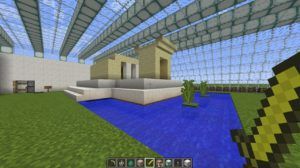
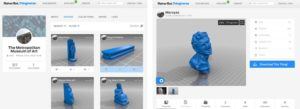
- /Metcraft[viii], a customized Minecraft game virtually representing the Met and developed as a teaching tool to enhance the museum experience for students. Students are requested to visit the Museum and take notes on specific piece of arts. Once they are back in the classroom, they can play the game and unlock levels by answering questions thanks to their notes.
- Multi-sensorial sculptures that re-create actual sculptures with the help of 3D-printers and in which some sound and/or smell systems are added. Customers can finally succumb to their irrepressible desire to touch pieces of art in the museum. [ix] The Met even created a kit available for purchase (Edible Met) where you can create your own replica of famous sculptures with edible material.[x]
All those experimentations have earned the Met a really good press coverage and has positively impacted the numbers of visitors especially among younger population that usually don’t come often.
However, there are still an enormous room for growth in technology adoption especially in the way visitors interact with arts. For example, the Cooper Hewitt Museum has developed a specific Pen[xi] (equipped with computer memory, a tiny radio for short-range communication and a touch-sensitive stylus) that is distributed to each visitor with which you can:
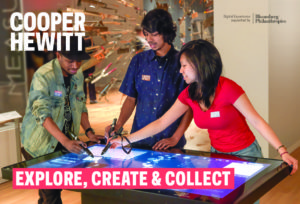
- Collect and save pieces of art that you can later retrieve at home
- Transfer your collection to one of the interactive table to explore them in more details
- Sketch your own design in the Immersion Room that is directly projected on the walls and where you can get audio commentaries from designers on specific patterns or colours
Another major trend is the integration of both augmented and virtual reality within the museum experience. Museums like the Met should adopt it before people no longer leave their home and experience everything virtually with a headset.[xii] Some projects to integrate AR/VR experimentations in museums are already under development such as:
- The Art ++[xiii] augmented reality app developed in collaboration by Stanford graduate students and Cantor Arts Center staff that provide visitors witg the history and context of selected artworks by overlaying relevant content on a tablet viewfinder
I would strongly recommend for The Met to join this trend and incorporate more AR/VR projects within its MediaLab. Those technologies represent amazing experience opportunities that people cannot yet imagine but will certainly be willing to pay for. “A guided tour with Monet? Sign me in!”
798 words
[i] Kati Price “How can technology improve the museum experience?”, Victoria and Albert Museum Blog, Oct 2 2014, http://www.vam.ac.uk/blog/digital-media/how-can-technology-improve-the-museum-experience, visited on Nov 17 2016
[ii] Arup Foresight+Research+Innovation, “Museums in the digital age”, Oct 2013
[iii] The Met, “The MediaLab”, http://www.metmuseum.org/about-the-met/office-of-the-director/digital-department/medialab, visited on Nov 17 2016
[iv] The Met, “The Met App”, http://www.metmuseum.org/visit/met-app, visited on Nov 17 2016
[v] Matt Felsen and Erin Peters, “Color The Temple: Using Projected Light to Restore Color”, The Met, Dec 24 2015,http://www.metmuseum.org/blogs/digital-underground/2015/color-the-temple, visited on Nov 17 2016
[vi] The Met, “Met Museum Taking Part in Google Art”, Feb 1 2011, http://www.metmuseum.org/blogs/now-at-the-met/news/2011/met-museum-taking-part-in-google-art-project, visited on Nov 17 2016
[vii] Kari Paul, “The Hip Hop Guide to the Metropolitan Museum of Art”, MotherBoard, Sept 29 2015, http://motherboard.vice.com/read/the-hip-hop-guide-to-the-metropolitan-museum-of-art, visited on Nov 17 2016
[viii]The Met, “/Metcraft: Independent Exploration and Experimentation through Customization”, Aug 11 2016, http://www.metmuseum.org/blogs/digital-underground/2016/metcraft, visited on Nov 17 2016
[ix] Ezgi Ucar, “Multisensory Met: Touch, Smell, and Hear Art”, The Met, Sept 8 2015 http://www.metmuseum.org/blogs/digital-underground/2015/multisensory-met, visited on Nov 17 2016
[x] Jimmy Tang, “Edible Met: Eating Art to Understand”, The Met, Jun 9 2015, http://www.metmuseum.org/blogs/digital-underground/2015/edible-met, visited on Nov 17 2016
[xi] Cooper Hewitt “The New Cooper Hewitt Experience”, http://www.cooperhewitt.org/new-experience/Copper Hewitt, visited on Nov 17 2016
[xii] Centers for the Future of Museums, “Trends Watch 2016”, 2016
[xiii]Art++, Augmenting Art with Technology, http://artplusplus.stanford.edu/, visited on Nov 17 2016



Interesting post about future of museum!
I agree that museums can attract more people by actively adopting newly invented digital technology. However, I am little bit worried about possibility of damaging aura of masterpiece. One of the reasons why still many people are visiting museums even though they can see all those famous paintings at their home through internet is to feel the aura of authentic masterpiece. The way masterpieces are displayed and difficulty to access to masterpieces contribute to the creation of aura in the museum. So, I think museums should be careful to not hurting the serious mood of traditional museum when they are adopting new digital technology.
This is an amazing post. Very interesting topic and and something that is very close to me. I can see technology being a tool for increasing attendance to the museums especially among the younger generation. Two things that were going on in my mind when I was reading this
1. It seems to have been adopted majorly by the large / famous museums that can afford to do this. Is there a chance we can look at the cost breakdown for this? It might offer an insight into whether some of the smaller museums with lesser budgets / endowments would be able to upgrade their experience through technology. Else, we might see a risk of smaller museums becoming obsolete and only being able to compete on their “content”
2. It seems to have been largely localized so far. Each museum developing their own app. If there’s enough commonality in these apps, do you think there is space for a company to do this in a centralized manner and earn revenue from it? Would be an interesting start-up idea.
Great post, Vika! I personally wonder when the general public will begin to recognize graphic design and digital animation as a medium of classical art. I wonder if we’ll ever appreciate the spatial reasoning of a three-dimensional graphic designer as much as the brush strokes of a 19th century artist. In the meantime, will a digital representation of visually beautiful art ever sufficiently represent the reality of experiencing art in person? As a fan of Minecraft, I love the idea of using the platform in lieu of a textbook. However, at the end of the day, I don’t think a video came can completely replace a field trip.
That’s such a great idea! Ages ago the Victoria and Albert Museum in London created an exhibition space for replicas of sculptures and buildings from all around the world, with the goal of opening art and architecture up to “commoners”. It is great to see that the Met is so open at using technology to make their exhibits come to life, giving visitors more information about what’s going on and what they’re seeing. Combining what they’re doing with the Macy Beacon sounds great as well. Hope to see those clunky audio guides gone soon!